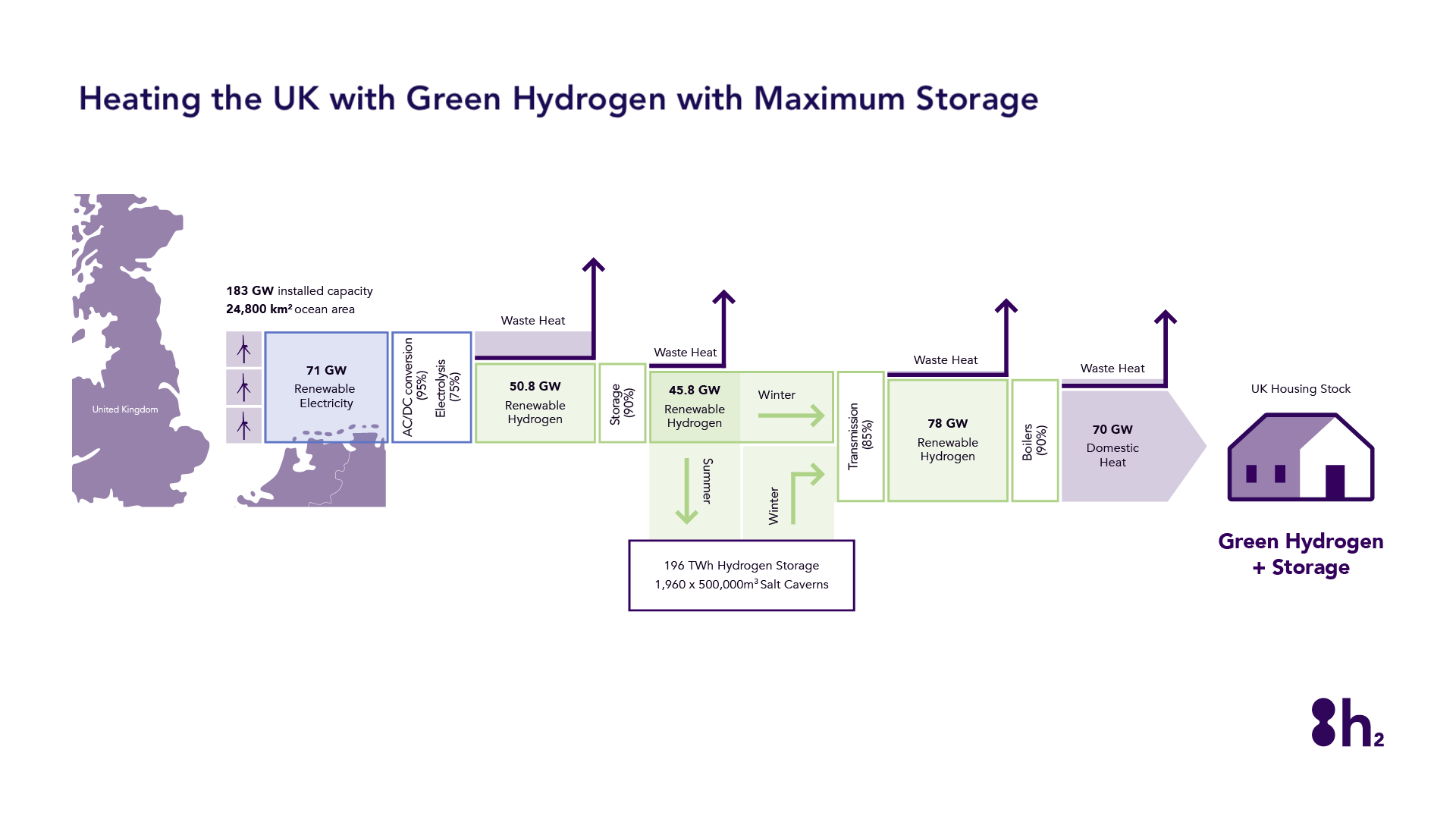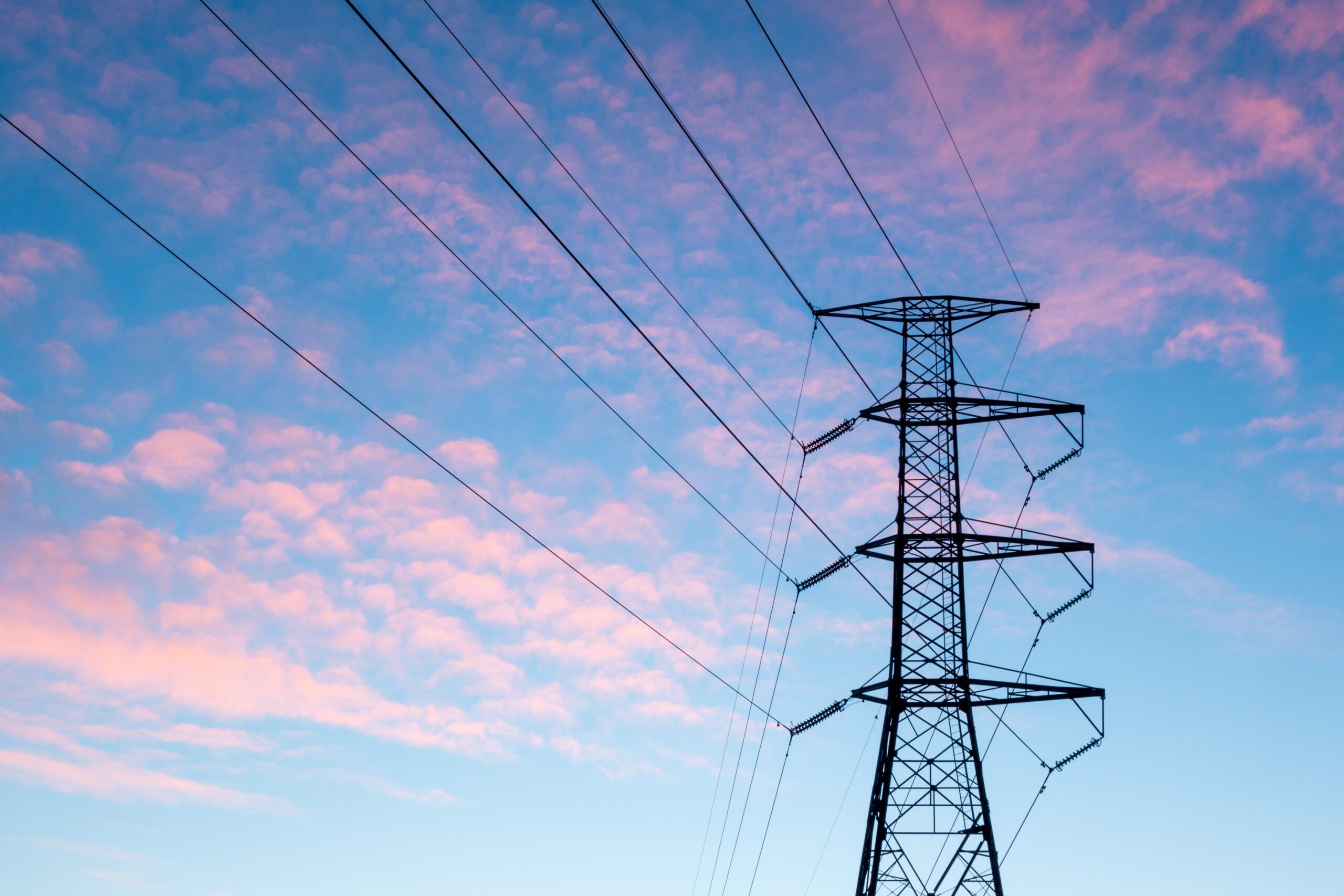Adapted from ‘Heating with Hydrogen and Storage’ by David Cebon – Director of the Centre for Sustainable Road Freight and the Cambridge Vehicle Dynamics Consortium; Professor of Mechanical Engineering, University of Cambridge.
Using hydrogen to heat buildings in a low-carbon future has been shown to be less energy efficient, more carbon-intensive and more costly than using heat pumps.
Producing green hydrogen, which is then used to power hot water boilers, requires vast amounts of renewable electricity – over five times more than using the same electricity to directly power heat pumps.
Despite this, hydrogen heating is still being considered in a number of countries including the UK, with some suggesting that energy storage could significantly reduce the vast amounts of renewable electricity generation required for hydrogen production.
Maximum storage
In a ‘maximum storage’ scenario, storing green hydrogen for heating homes could cut renewable electricity generation requirements by up to half when compared with no storage.
However, it would not solve the fundamental problems of hydrogen heating: it would still require enormous renewable electricity generation far exceeding the UK’s 2030 target, along with the largest hydrogen storage project on the planet.
As explained in a previous post, heating the UK with green hydrogen without energy storage would require approximately 367 gigawatts (GW) of installed offshore wind generating capacity – meaning 30,600 of the largest wind turbines covering a sea area larger than Denmark – to generate 143 GW of renewable electricity to satisfy the UK housing stock’s average heating demand of 70 GW throughout the winter months [1].
This capacity would be necessary due to energy losses associated with hydrogen heating, from its production through to end use.
Conversely, using heat pumps to provide the same amount of heat for UK homes would require only 26 GW of renewable electricity on average, corresponding to 67 GW of installed wind turbine capacity.

If the UK were to store all hydrogen generated during the six non-heating ‘summer’ months, from mid-spring to mid-autumn, it could later use this to supplement its winter-generated hydrogen – making it possible to generate green hydrogen all year round at half the rate.
Yet this halved renewable electricity requirement, 71 GW on average, would still require a huge installed capacity of 183 GW of offshore wind, amounting to 15,300 offshore wind turbines and a sea area of 24,800 square kilometres.
This is still almost three times the renewable electricity capacity required by a heat pump solution.

Uncharted territory
Storing enough hydrogen to heat the UK with halved renewable electricity requirements would also require an unprecedented level of storage.
Some 196 terawatt hours (TWh) of hydrogen would need to be stored in this upper-limit scenario, corresponding to half the energy needed to heat houses in winter, while accounting for energy losses during storage and transmission [2].
This would require a total of 1,960 underground salt caverns, each with a diameter of 100 metres and a volume of 500,000 cubic metres, covering a total land area of about 196 square kilometres [3].
Construction of salt caverns on this scale, while thought to be possible within the available onshore salt deposits in the UK [4], is uncharted territory. Nothing like it has ever been attempted before in any country.
A viable heating system?
It is doubtful that such a system to heat the UK using green hydrogen could be built by 2050 due to the magnitude of required infrastructure.
The country currently has about 14 GW of offshore wind generating capacity, with a national target of just 50 GW for 2030 [5].
Building the 183 GW of capacity required for heating with green hydrogen, plus almost 2,000 salt caverns for storage, would be a monumental task.
The alternative of building 367 GW of renewable electricity generation for green hydrogen heating without storage by 2050 is also inconceivable.
Pouring resources into such hydrogen heating projects, even if combined with other heating solutions, makes little scientific or economic sense when electric-powered heat pumps comparatively require just 67 GW of offshore wind to heat the entirety of the UK.
Our conclusion is that the only practical way to get to near-zero emissions in the UK’s heating system is to use heat pumps and heat networks. This is the most efficient use of energy, requiring the minimum amount of new renewables most in line with the country’s targets.
Footnotes
[1] The UK’s housing stock had an average national requirement of about 70 GW of heat throughout the winter months of 2021. Accounting for the 49% efficiency of hydrogen heating, 143 GW of renewable electricity would be needed to generate this heat: 70/0.49 = 143 GW. This would require approximately 367 gigawatts (GW) of installed offshore wind generating capacity, corresponding to 30,600 12 MW wind turbines covering a sea area of approximately 49,600 km2.
[2] This 196 TWh hydrogen storage requirement is first based on the equivalent of half of the 300 TWh of natural gas used to heat houses in winter, i.e. 150 TWh, and then accounts for energy losses using transmission and boiler efficiencies: 150 TWh /(0.85×0.9) = 196 TWh.
[3] Up to 100 GWh of hydrogen could be stored in a salt cavern with a volume of 500,000m3 at a pressure of 200 bar, according to The American Clean Power Association.
[4] For further reading, see ‘Does the UK have sufficient geological storage capacity to support a hydrogen economy? Estimating the salt cavern storage potential of bedded halite formations’ published in the Journal of Energy Storage.
[5] ‘Cumulative installed capacity of offshore wind in the United Kingdom from 2009 to 2022’, Statista.



